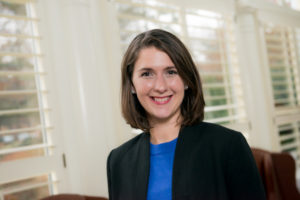I’m pleased to introduce a new recurring feature today, an education-focused “Friday Five.” We’ve created a standard set of five questions, and we’ll ask guests to briefly respond, in their own words, about their work. The goal is to hear from interesting people across education who are leading new initiatives or research projects. You’ll see us using this format occasionally here on Edu Commentary and at Bellwether’s group blog Ahead of the Heard.
For the series launch, I reached out to Bellwether Associate Partner Bonnie O’Keefe. Bonnie is the co-author, along with Bellwether Analyst Brandon Lewis, on a new paper about the future of state assessments. State assessment policy is at a critical juncture, and the national conversation has not yet caught up to some of the innovations playing out in the states. You’ll have to read the full paper to understand the whole picture, but what follows are Bonnie’s answers to the Friday Five:

How would you describe this project in 200 words or less?
There are lots of opportunities available to states to improve and innovate their assessments under current federal law, but states don’t seem to be taking them. We look at the reasons why, and lift up some examples of states moving in interesting directions around assessment. We focus in on four areas in particular:
- Interim assessments for accountability
- Formative assessments to support instruction
- Shared item banks and new collaborations among states
- Social studies and science assessments
There are a few states starting to think outside the box on assessment, and a larger group making more subtle moves under the radar. But some states are at risk of backsliding on assessment quality because tests have become so politically toxic. We argue that investment in assessment is still important and valuable. States should work towards a well-rounded system of assessments (not just one test) that can support accountability, equity, and transparency, and also support teachers in real and useful ways.
What would most people miss about this project if they only read the headline?
One, innovation in testing isn’t just about technology. There are some exciting examples that use technology to make tests faster, more accurate, or more engaging. But there are also examples where states are innovating away from technology and towards interactive or longer-term tasks created, administered, and graded by teachers.
Two, we’re not just talking about end of year reading and math tests. I was especially interested in exploring facets of state work on assessment that fall outside what federal law mandates. We highlight science, social studies, and formative assessment for instruction. But, you could also include things like early childhood and K-2 assessments, or assessments for English learners.
What compelled you to do this work?
Many of the ideas we highlight in this brief get talked about at assessment conferences. But to someone involved in education policy who doesn’t specialize in assessment, especially policymakers, testing might just seem like a complicated, controversial chore. Why would you want to invest money and time in testing? I thought it was important to make the counterargument to that line of thinking, and delve into some ways that innovation and improvement are available and valuable for states right now.
What would a smart critic say about it, and how would you respond?
If someone comes in dead set against testing of any kind, I doubt this paper will sway them, but I hope it provides some nuanced insight into what innovative tests can look like, and why it is worth improving tests, rather than eliminating them.
I could anticipate other critics saying that states shouldn’t expand their role in testing, should stick only to what is mandated, and leave everything else to local decision-makers. My response is that we’ve seen states do only the bare minimum, and what happens is basically a waste of time and money. Students and teachers still have to spend their time on tests, but they’re less useful and lower quality, and they don’t help anyone improve. It’s worthwhile to be more ambitious and innovative in order to make assessments a positive force in schools.
Other than this project, what are you most excited about right now?
In life, I’m excited for summertime adventures in the Finger Lakes (I’m based in Rochester, NY).
In education policy, I’m in the middle of a research project on local school performance frameworks that I’m very excited to share this fall. So, if anyone reading knows of work happening in their district to create or revise a school performance framework, they should send me an email!
–Guest post by Chad Aldeman




